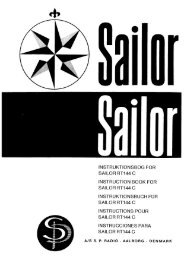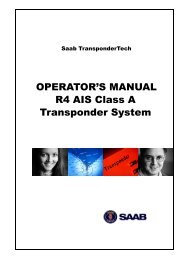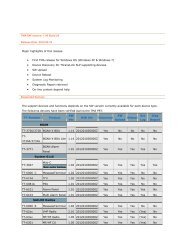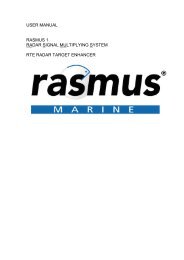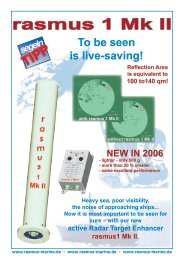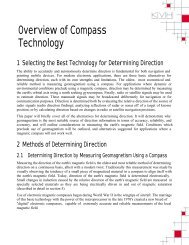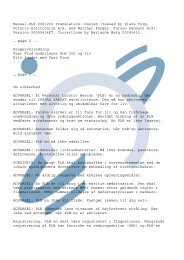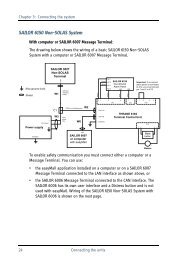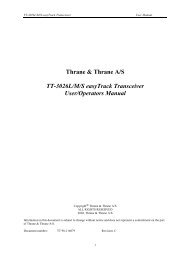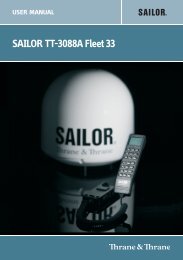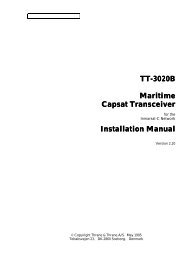TT-3000E mini-C GMDSS User Manual - Polaris-as.dk
TT-3000E mini-C GMDSS User Manual - Polaris-as.dk
TT-3000E mini-C GMDSS User Manual - Polaris-as.dk
Create successful ePaper yourself
Turn your PDF publications into a flip-book with our unique Google optimized e-Paper software.
<strong>TT</strong>-<strong>3000E</strong> <strong>mini</strong>-C <strong>GMDSS</strong> <strong>User</strong> <strong>Manual</strong><br />
costal section. The <strong>TT</strong>-<strong>3000E</strong> system can not determine<br />
automatically what the current costal area is, so if the user<br />
want to receive these EGCs the relevant area codes must be<br />
set explicitly (each costal area, along with the<br />
corresponding NAVTEX transmitter, is designated by a<br />
letter ‘A’ to ‘Z’). Further information can be found in the<br />
‘Admiralty List of Radio Signals’ published by the<br />
Hydrographer of the Navy in the UK.<br />
Each EGC h<strong>as</strong> a priority <strong>as</strong>signed: Routine, Safety, Urgent, or<br />
Distress. When an EGC with urgent or distress priority is<br />
received the receiver is required to indicate this clearly in<br />
order to notify the crew.<br />
Distress alerting<br />
A <strong>GMDSS</strong> installation that supports distress alert will have<br />
an alarm button that will initiate an alert when pressed for<br />
more than 5 seconds. The distress alert protocol is<br />
carefully designed so that it will get through regardless of<br />
the current state and activity of the Inmarsat-C transceiver<br />
(provided, of course, that the installation is working and<br />
active).<br />
Having said that, there are a number of configuration issues<br />
that should be considered. The user should select which<br />
LES that will receive the alert and the main advantage of<br />
doing this is that it determines beforehand how subsequent<br />
emergency communication should be routed. The alert<br />
itself will in any c<strong>as</strong>e be p<strong>as</strong>sed on to the authorities<br />
closest to the distress position. If no LES is chosen by the<br />
user the <strong>TT</strong>-<strong>3000E</strong> will select one automatically.<br />
The <strong>TT</strong>-<strong>3000E</strong> also h<strong>as</strong> an option of choosing a cause for<br />
the alert and the position that will reported with the alert;<br />
the latter will rarely be relevant since the <strong>TT</strong>-3026C<br />
transceiver h<strong>as</strong> a built-in GPS unit that will provide a<br />
position automatically.<br />
27



